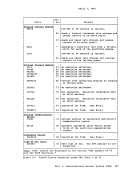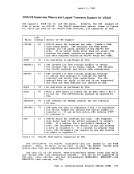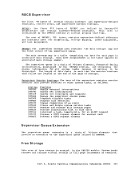address.
adds a
the requested
All the options of ATTACH are supported in
as
control to the routine specified, fills in an ECE
completion bit if an ECB is specified, passes control
to an exit routine if one is specified, and returns
control to the instruction following the ATTACH.
requested by the ATTACH macro
to the user.
All the options of TTIMER are supported.
All options of
option had been specified, and the
treated as a Nap; it returns control to the
It returns control
Except for
follows. The DBC address specified with
to verify that the file associated with the DCB is
open. If it is not open, control is returned to the
caller with a return code of 4. If the file is open,
then storage is dumped (unless the FCB indicates a
printer. The dump contains the
and the storage specified.
The ENQ routine in
It returns control
All the options of
specified DCB.
are supported except for the
set to
All the options of
option, which is set to
which is set to
is not supported.
block as requested.
The DETACH routine in
It returns
The
user.
All the options of RDJFCB are supported. RDJFCE
causes a Job File Control Elock (JFCB) to be read from
a
276















































































































































































































































































































































































































































